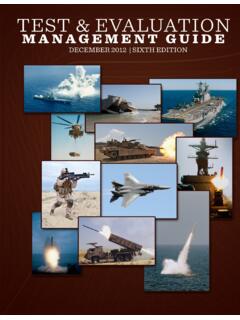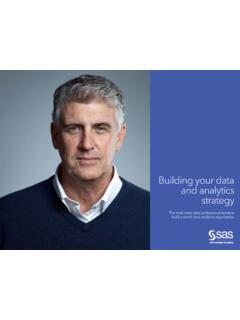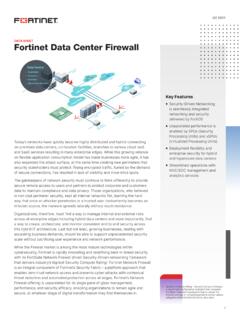Transcription of Introduction to Scrum - The Agile Director
1 Introduction to Scrum Introduction to Scrum (cc)-by-sa Evan Leybourn Page 1 of 84 Introduction to Scrum Student Guide Introduction to Agile Methods by Evan Leybourn is licensed under a Creative Commons Attribution-ShareAlike Australia License < > Evan Leybourn Twitter: @eleybourn Introduction to Scrum Introduction to Scrum (cc)-by-sa Evan Leybourn Page 2 of 84 OTHER WORKS BY EVAN LEYBOURN DIRECTING THE Agile ORGANISATION BY EVAN LEYBOURN Embrace change and steal a march on your competitors Discover the exciting adaptive approach to management Become the Agile champion for your organisation Business systems do not always end up the way that we first plan them.
2 Requirements can change to accommodate a new strategy, a new target or a new competitor. In these circumstances, conventional business management methods often struggle and a different approach is required. Agile business management is a series of concepts and processes for the day-to-day management of an organisation. As an Agile manager, you need to understand, embody and encourage these concepts. By embracing and shaping change within your organisation you can take advantage of new opportunities and outperform your competition. Using a combination of first-hand research and in-depth case studies, Directing the Agile Organisation offers a fresh approach to business management , applying Agile processes pioneered In the IT and manufacturing industries.
3 Introduction to Scrum Introduction to Scrum (cc)-by-sa Evan Leybourn Page 3 of 84 TABLE OF CONTENTS Other Works by Evan Leybourn .. 2 Directing the Agile Organisation by Evan Leybourn .. 2 Table of Contents .. 3 What Does Agile Mean? .. 5 The Agile Manifesto .. 6 Agile Methods .. 7 Key Points .. 7 Understanding Waste .. 8 Critical Success Factors .. 9 Common Misconceptions .. 10 Scrum Overview .. 11 Project Roles .. 14 Project Team .. 15 Interested and Committed .. 15 Primary Roles .. 16 Project Initiation .. Error! Bookmark not defined.
4 Specifications in Agile ? .. 19 Beginning the Process .. 19 Outcomes .. 19 Backlog .. 20 Accuracy .. 22 Estimating Effort .. 23 How? .. 23 Estimating 25 Cost / Time / Scope .. 26 Introduction to Scrum Introduction to Scrum (cc)-by-sa Evan Leybourn Page 4 of 84 Starting an Sprint .. 28 Sprint Planning Meeting .. 30 During an 34 Daily Lifecycle .. 35 Task Lifecycle .. 36 Development Hints .. 38 Test Driven Development .. 39 Continuous Integration .. 40 Scrum Meeting (aka Daily Stand-up) .. 43 44 Burndown & Burnup Charts .. 45 Progress Problems.
5 46 Finishing an Sprint .. 49 Sprint Review .. 50 Kaizen and the Sprint Retrospective .. 51 References .. 52 Books & Links .. 53 Tools .. 53 Introduction to Scrum Notes: Introduction to Scrum (cc)-by-sa Evan Leybourn Page 5 of 84 WHAT DOES Agile MEAN? On two occasions I have been asked, Pray, Mr Babbage, if you put into the machine wrong figures, will the right answers come out? [..] I am not able rightly to apprehend the kind of confusion of ideas that could provoke such a question. Charles Babbage, 1864 Introduction to Scrum Notes: Introduction to Scrum (cc)-by-sa Evan Leybourn Page 6 of 84 THE Agile MANIFESTO The Agile Software Development Manifesto was developed in February 2001, by representatives from many of the fledgling Agile processes such as Scrum , DSDM, and XP.
6 The manifesto is a set of 4 values and 12 principles that describe What is meant by Agile ". THE Agile VALUES 1. Individuals and interactions over processes and tools 2. Working software over comprehensive documentation 3. Customer collaboration over contract negotiation 4. Responding to change over following a plan THE Agile PRINCIPLES 1. Our highest priority is to satisfy the customer through early and continuous delivery of valuable software. 2. Welcome changing requirements, even late in development. Agile processes harness change for the customer's competitive advantage.
7 3. Deliver working software frequently, from a couple of weeks to a couple of months, with a preference to the shorter time-scale. 4. Business people and developers must work together daily throughout the project. 5. Build projects around motivated individuals. Give them the environment and support they need, and trust them to get the job done. 6. The most efficient and effective method of conveying information to and within a development team is face-to-face conversation. 7. Working software is the primary measure of progress. 8. Agile processes promote sustainable development.
8 The sponsors, developers, and users should be able to maintain a constant pace indefinitely. 9. Continuous attention to technical excellence and good design enhances agility. 10. Simplicity the art of maximising the amount of work not done is essential. 11. The best architectures, requirements, and designs emerge from self-organising teams. 12. At regular intervals, the team reflects on how to become more effective, then tunes and adjusts its behaviour accordingly. Introduction to Scrum Notes: Introduction to Scrum (cc)-by-sa Evan Leybourn Page 7 of 84 Agile METHODS The term Agile actually refers to a concept, not a specific methodology.
9 There are many, and sometimes conflicting, methods that can be used under the Agile umbrella. These include; Agile Unified Process, Behaviour Driven Development (BDD), Crystal Clear, Dynamic Systems Development Method (DSDM), Extreme Programming (XP) Feature Driven Development (FDD), Kanban Lean Development, Rapid Application Development (RAD), IBM - Rational Unified Process (RUP), Scrum , Test Driven Development (TDD), KEY POINTS All of the above methods have four key points in common. 1. Iterative design process 2.
10 Continuous stakeholder engagement 3. Aims for quality and reliable software 4. Short development cycles (up to a month) allows to regular delivery of software This shows that an Agile approach is appropriate in contexts where the outcomes are not known (or can t be known) in advance and where the delivery of the outcomes cannot be fully controlled. Introduction to Scrum Notes: Introduction to Scrum (cc)-by-sa Evan Leybourn Page 8 of 84 The following figures1 are an excellent example of the differences between traditional (or phased) software development vs.





